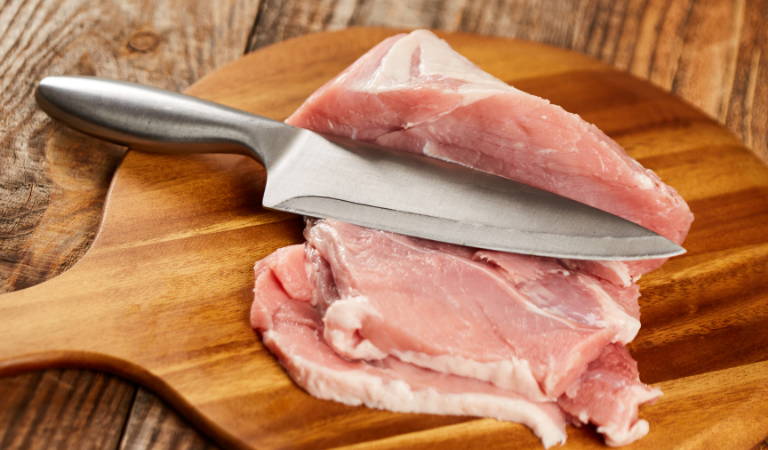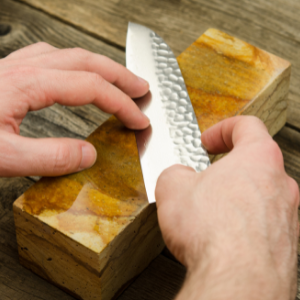It’s a known fact that the chef’s knife is the most versatile of all the culinary knives because of its ability to cut through any type of ingredient. Whether you’re an amateur chef, pastry chef, apprentice chef, or professional chef, a chef’s knife is a tool you are going to use throughout your culinary career, making it more than just a sharp edge to cut things with. A knife’s design can affect the way you prepare ingredients and can help or hurt your efficiency in the kitchen. By learning about these essential knives, you will be able to determine exactly what you want in a good chef’s knife when it’s time to select one.
What Is A Chef’s Knife?

Acting as your right hand in the kitchen, a chef’s knife is made for all kinds of uses. It can slice, chop, crush, mince, cut, and julienne anything from vegetables to meats. You can identify a chef’s knife by its wide, curved belly, sharp tip, heavy weight, and ergonomic handle. They are made in a variety of sizes, typically from 6 to 14 inches long, which makes it easy to find one for your hand size. While they are handy for practically anything, they are not ideal for tasks such as cleaving bones, bread slicing, or peeling.
What Are The Best Chef’s Knives?
Throughout history, many variations of the chef’s knife and its unique design have popped up and have stirred debate as to which one is the best. Amongst the most popularly used and mentioned, are the German, Japanese, and French chef’s knives. While no one can seem to agree which is best, it is clear that each one has its advantages and disadvantages.
German Chef’s Knife
If you’re looking for a sturdy knife with a sharp edge, the German chef’s knife is your best go-to. Prized for their handling and durability, these knives are known for their comfortable handles and sturdy German steel. The blade is typically made of stainless steel and chromium, making it corrosion-resistant, chip-resistant, and long-lasting. However, the chromium makes the steel softer, requiring you to sharpen it more often. With a more rounded blade, these knives provide a smooth rocking motion while cutting that’s perfect for chopping and mincing.
Japanese Chef’s Knife
These knives are famous for their sharp edges and hard steel. Unlike German chef’s knives, Japanese knives have a straighter edge, allowing you to smoothly bring it down and make precise slices. The blade might be thin, but it is typically made out of high carbon steel, giving the blade a watery look. This type of steel gives you a clean cut every time and doesn’t need to be sharpened often. Despite its strong construction, it does have a weakness: acidic foods. If faced with fruits, like oranges and tomatoes, the blade becomes brittle and will turn dark if not wiped and cleaned immediately afterward.
French Chef’s Knife
A French chef’s knife, also known as a Sabatier, has a belly that is straighter than a German knife but more rounded near the tip, giving you more control while handling the knife. They are lightweight and made of stainless steel, though the quality of stainless steel can vary depending on the manufacturer. The whole knife is usually made from a singular piece of steel. While the designs differ slightly from each other, French and German knives are very similar.
Which Chef’s Knife Is Right For Me?
After determining which type of design and steel you prefer, make sure you have an opportunity to hold the knife before purchasing it. When it’s in your hands, ask yourself the following questions to give you an idea of how it handles while in use.
- Is it the right weight?
- Is it balanced?
- Does it have a comfortable handle?
How Much Does A Chef’s Knife Cost?
A chef’s knife will cost you anywhere from $10 to more than $1,000. If you are planning to run a professional kitchen, it is highly recommended you purchase a knife that is on the expensive end as long as it is something you can afford. When it comes to the chef’s knife, you get what you pay for. In other words, the more expensive a knife is, the more reliable and long-lasting it will be. These are features that are highly sought after in the culinary world because chef’s knives are so often used and can have a lasting effect on your technique and food presentation. So don’t be surprised if you notice that the best knives are pricier, after all, you can’t put a price on quality.








